There are no products listed under this category.
Welcome to CM Online Store!
Antibody Drug Conjugate Kits!
AqT bioconjugates coming soon!
Protein Labeling and Conjugation
The most common functional groups targeted for protein bioconjugation include hydroxyl groups (found on Thr, Ser, and the phenolic group in Tyr), carboxylic acids (at the C-terminus and on Asp and Glu), sulfhydryls (on Cys), and amines (at the N-terminus and on Lys). Histidine's imidazolyl nitrogen and arginine's guanidinyl groups can also be modified, though they are less frequently used.
Because most proteins contain multiple copies of these same amino acids, conjugation methods using native functional groups often produce heterogeneous bioconjugates. To achieve site-specific labling, an orthogonal functional group must be introduced. The most widely used strategy is cysteine incorporation through mutagenesis. At CellMosaic, we specialize in working with Cys-mutant proteins and labeling them with a variety of molecules.
If the protein is glycosylated, another site-specific approach is glycan-based labeling. Adjacent hydroxyl groups on the carbohydrate moiety can be oxidized to form reactive formyl groups. CellMosaic offers a range of custom linkers and reagents designed to react specifically with these formyl groups under very mild conditions.
A less controlled method for generating more homogeneous protein conjugates involves optimizing reaction conditions in combination with effective purification strategies.
Example 1: Synthesis of protein-KLH conjugates at CellMosaic (loaded 25 proteins per KLH). 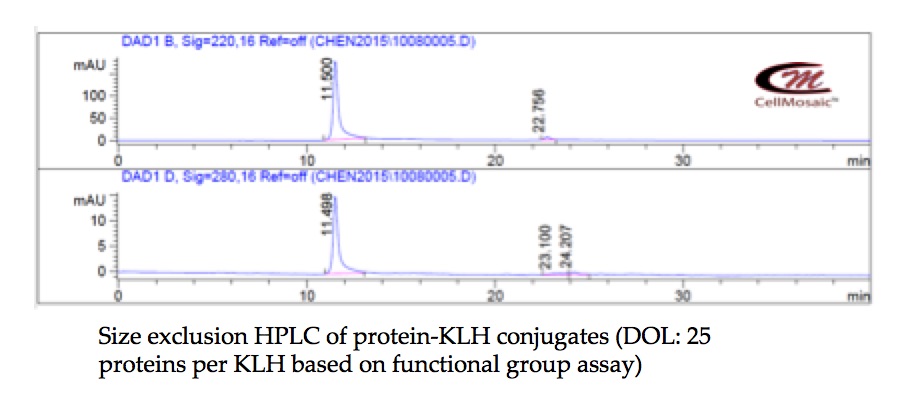
Example 2: Fluorescent labeling of a protein with defined DOL at CellMosaic (over 97.5% pure by SEC-HPLC, comprehensive bioanalytical tools were used to characterize the product).
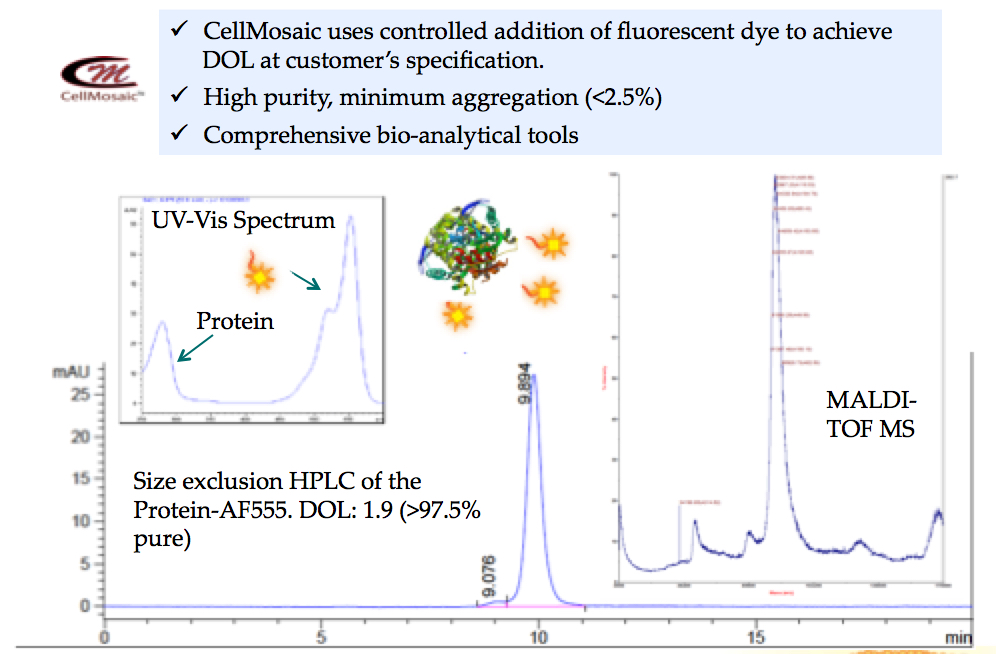
Peptide and Peptidomimetic Labeling and Conjugation
At CellMosaic, we offer custom synthesis of natural peptides as well as a wide range of modified peptides, including peptidomimetics, peptides with orthogonal functional groups, fully protected peptides, chimeric peptides, fluorescent- or biotin-labeled peptides, peptide–oligo conjugates, and peptide–antibody/protein/enzyme conjugates.
We use automated peptide synthesizers for milligram- to gram-scale production. To ensure the highest quality, all peptides are synthesized using highly efficient HATU or HCTU coupling reagents, rather than the less efficient HBTU commonly used by other peptide providers to reduce costs. Our synthesis is performed using an Fmoc peptide protocol with method adjustments as needed to produce the highest-quality, racemization-free peptides.
Example 1: Biotin labeling of a peptide on solid phase peptide synthesis (over 99.9% pure by HPLC).
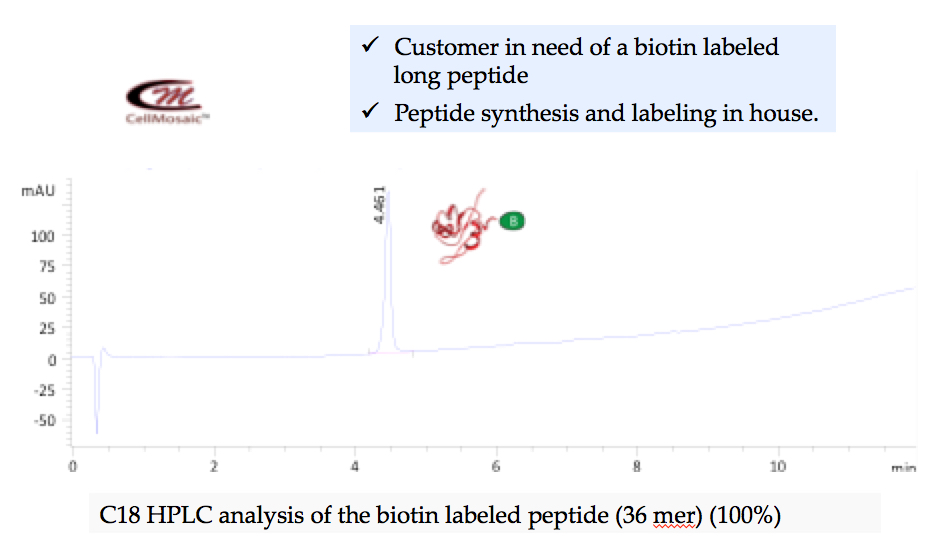
Example 2: Fluorescent labeling of a hydrophobic peptide at CellMosaic (over 99.9% pure by HPLC).
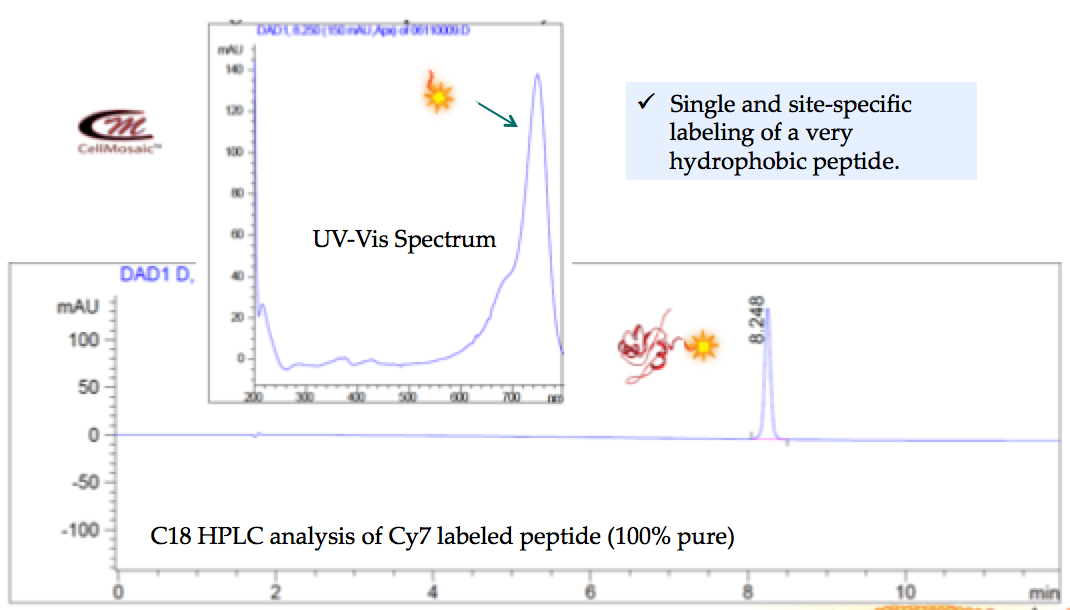
Cysteine has a free thiol group that can be specifically modified or conjugated with other molecules through well-established thiol chemistry; for example, by reacting with another thiol compound to form a cleavable disulfide bonded conjugate, or by reacting with a maleimide or an alkyl halide compound to form a stable thiol ether-bonded conjugate. N-terminal Cys-containing peptides have been used frequently for coupling with an immunogen carrier, such as KLH or BSA, for immunization purposes. Racemization of Cys residues is known to occur during standard HBTU and HATU coupling. This racemization can lead up to 40% byproduct and, in many cases, the racemized products are difficult to purify using standard reverse phase HPLC. To minimize the racemization of Cys residues (and histidine residues) during peptide synthesis, we intervene and perform manual couplings for all Cys and His residues. The outcome of such processes is high quality Cys or His-containing peptides. For peptides containing several Cys residues, we can selectively protect and deprotect Cys for labeling and conjugation. We can also selectively manage inter- or intramolecular disulfide bonds using orthogonal protecting groups for Cys.
Below is an example of a Cys-containing peptide synthesized using the standard automatic procedure (left) vs. manual intervention and special coupling (right)
.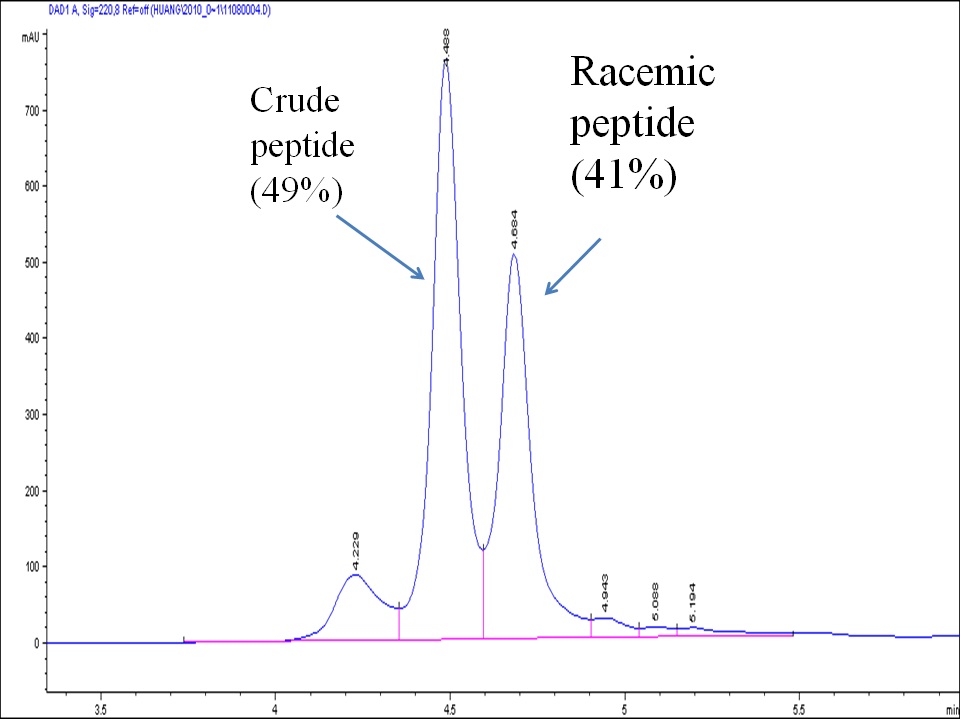

Aminooxy (-ONH2) is known to react quantitatively with ketone or aldehyde-containing compounds under very mild near physiological conditions. The resulting oxime compound is stable for most biological applications. The oxime bond can be further reduced to a more stable imine bond. Despite their usefulness, aminooxy peptides are not easy to make. Commercially available Fmoc protected aminooxy amino acid analogs suffer from double acylation during peptide synthesis. However, using the di-Boc protected aminooxy amino acid results in very poor yield of peptide during TFA cleavage because of acidic decomposition. At CellMosaic, we address this issue by synthesizing a special aminooxy monomer for peptide synthesis and using a clean cleavage cocktail.
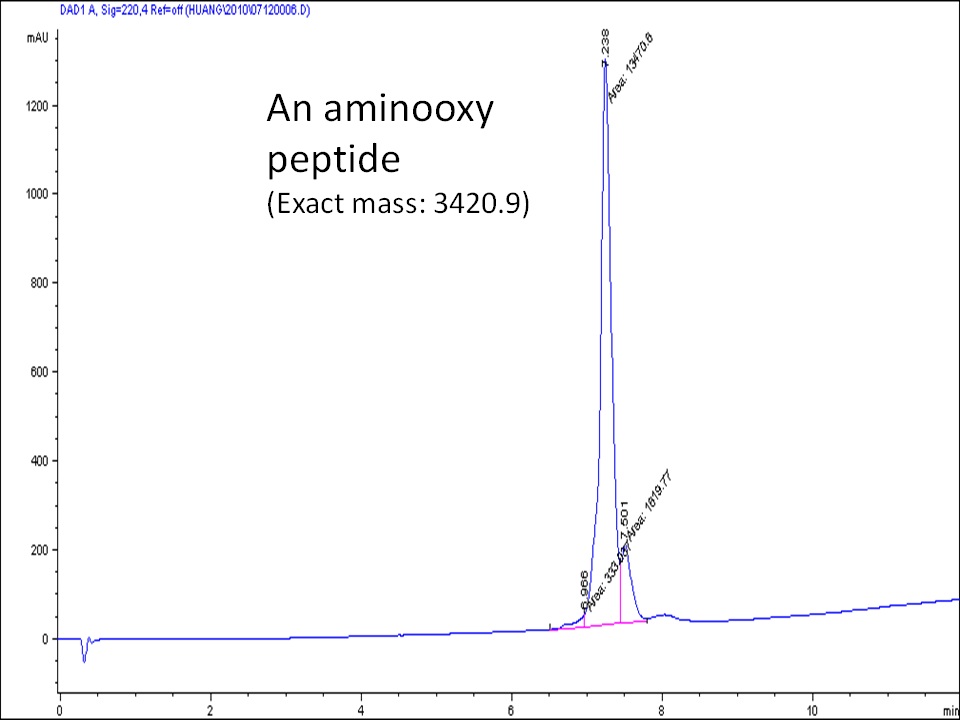
Keto peptides have frequently been synthesized at CellMosaic. Keto peptides can react with any aminooxy or hydrazine-containing compound.
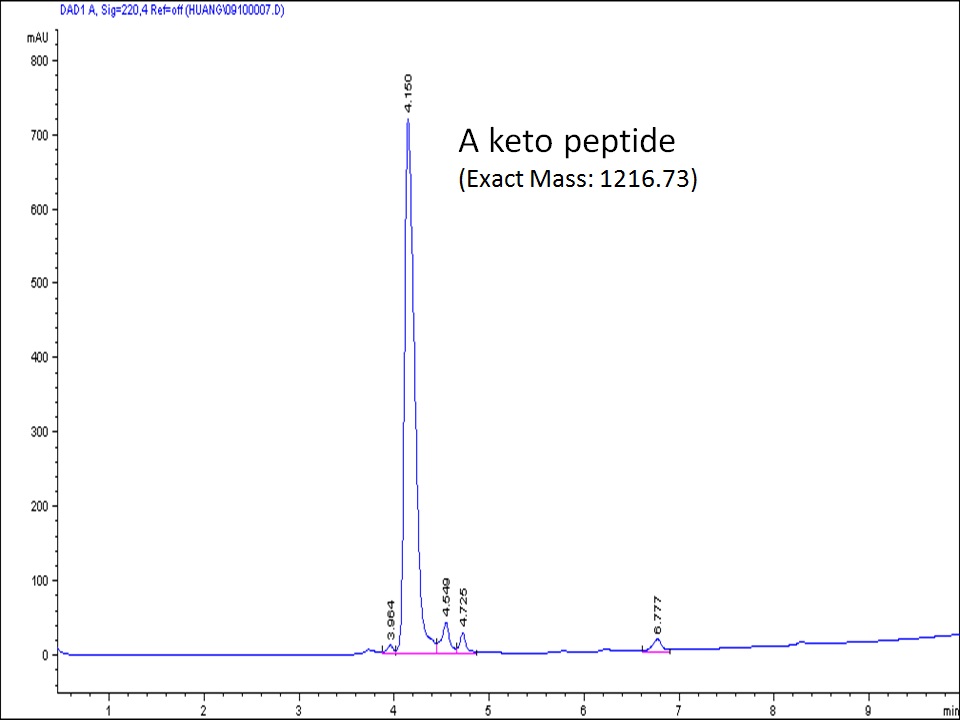
Peptides can be selectively labeled or conjugated through the C-terminal carboxylic acid. To perform such a conjugation for peptides containing few internal Asp and Glu residues and other functional groups, such as free amine and thiol, the peptide needs to be fully protected during modification and conjugation. Usually, trityl chloride or Rink acid resin can be used for synthesizing such fully protected peptide acids. The fully protected peptide acid can then react with any molecule of interest in solution.

There are no products listed under this category.